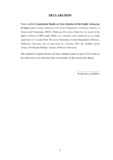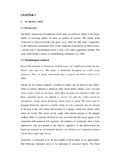Please use this identifier to cite or link to this item:
http://archive.nnl.gov.np:8080/handle/123456789/362Full metadata record
| DC Field | Value | Language |
|---|---|---|
| dc.contributor.author | KARNA (MALLICK), PUSHPA | |
| dc.date.accessioned | 2019-03-26T06:12:20Z | |
| dc.date.accessioned | 2020-08-21T07:33:40Z | - |
| dc.date.available | 2019-03-26T06:12:20Z | |
| dc.date.available | 2020-08-21T07:33:40Z | - |
| dc.date.issued | 2019-03-26 | |
| dc.identifier.uri | http://103.69.125.248:8080/xmlui/handle/123456789/362 | - |
| dc.description | THESIS SUBMITTED TO THE CENTRAL DEPARTMENT OF BOTANY INSTITUTE OF SCIENCE AND TECHNOLOGY TRIBHUVAN UNIVERSITY NEPAL | en_US |
| dc.description.abstract | The family Asteraceae or Compositae (aster, daisy, or sunflower family) is the largest family of flowering plants, in terms of number of species. The family name 'Asteraceae' is derived from the type genus Aster, while the older name 'Compositae' is still valid name; compositae refers to the composite characteristic of inflorescence, a special type of pseudanthium found in only a few other angiosperm families. The study of this family is known as synantherology | en_US |
| dc.language.iso | en_US | en_US |
| dc.subject | synantherology | en_US |
| dc.subject | Morphological | en_US |
| dc.title | CYTOGENETICAL STUDIES ON SOME MEMBERS OF THE FAMILY ASTERACEAE OF NEPAL | en_US |
| dc.type | Thesis | en_US |
| Appears in Collections: | 500 Natural sciences and mathematics | |
Files in This Item:
| File | Description | Size | Format | |
|---|---|---|---|---|
| 01Fronts.pdf | 44.8 kB | Adobe PDF |  View/Open | |
| 02DECLARATION to CONTENTS.pdf | 44.85 kB | Adobe PDF |  View/Open | |
| 04INSIDE TEXT--P. Karna (Figures all replaced with Originals).pdf | 2.39 MB | Adobe PDF |  View/Open |
Items in DSpace are protected by copyright, with all rights reserved, unless otherwise indicated.